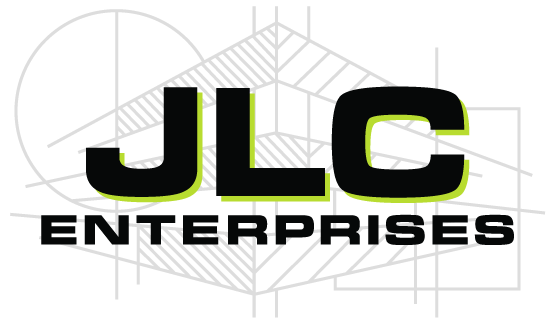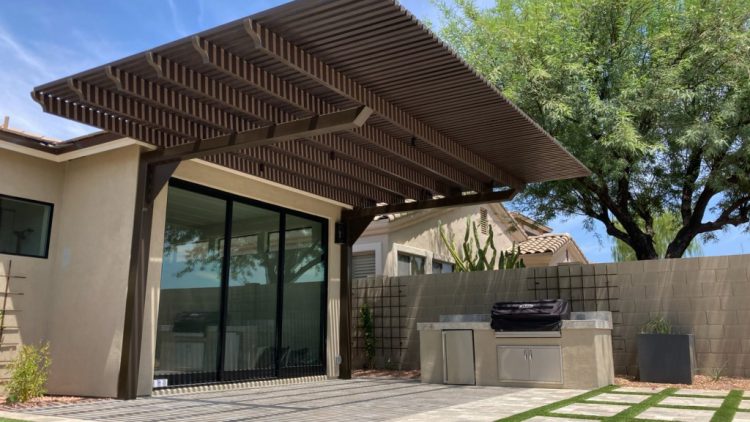Cost Of Patio Covers 2024
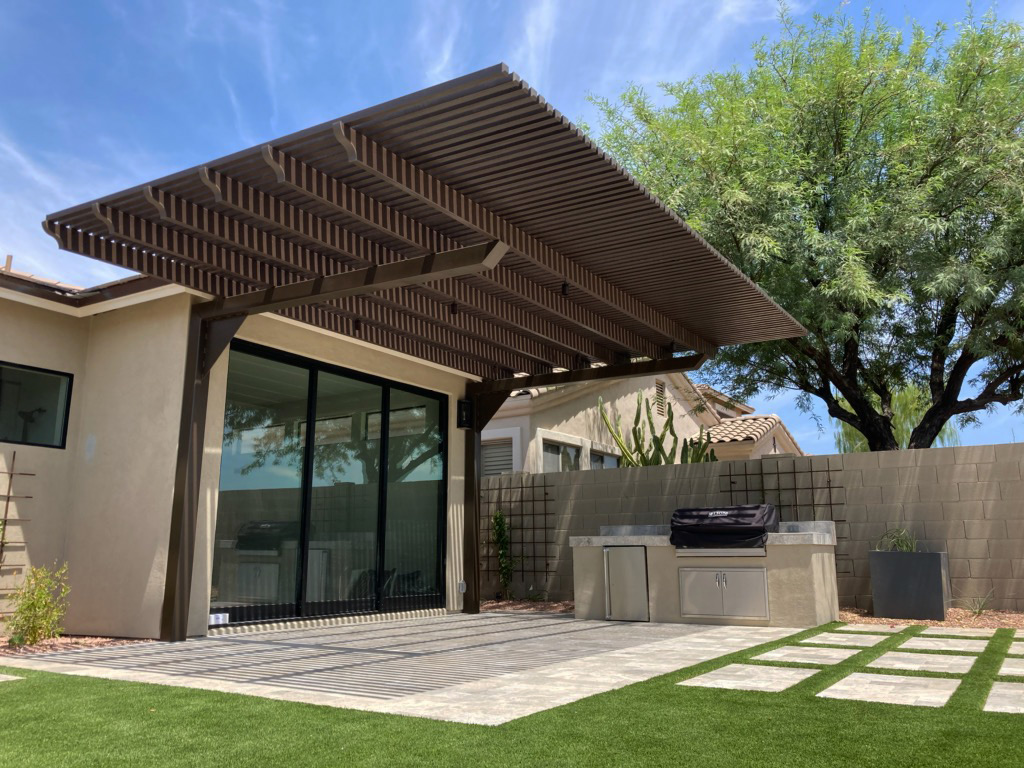
How Much Do Patio Covers Cost?
Average cost per square foot:
- $20 to $60: This is the typical range for installed patio covers, with the lower end representing basic materials like aluminum or vinyl lattice and the higher end encompassing solid roofs and more elaborate designs.
Average total cost:
- $2,000 to $12,000: This is a broader range depending on the size and complexity of your cover. A basic 10′ x 10′ aluminum cover might cost around $2,000, while a larger, custom-designed cover with a solid roof could reach $12,000 or more.
Factors affecting cost:
- Size: Larger covers naturally cost more per square foot.
- Material: Aluminum and vinyl lattice are more affordable, while wood, composite, and solid roofs are more expensive.
- Design: Custom designs, pergolas, and retractable covers will cost more than basic, attached covers.
- Installation: DIY kits can save money, but professional installation is recommended for complex designs or larger covers.
- Location: Labor costs can vary by region.
Here are some additional resources to help you estimate the cost of your specific patio cover:
- HomeAdvisor: Get free quotes from local contractors in your area.
- CostHelper: Provides a detailed cost breakdown for patio covers based on different materials and sizes.
- Remodeling Calculator: Offers a simple online calculator to estimate the cost of your patio cover.
Remember, these are just averages, and the actual cost of your patio cover will depend on your specific needs and preferences. It’s always best to get quotes from several contractors before making a decision.
Aluminum Patio Cover Cost
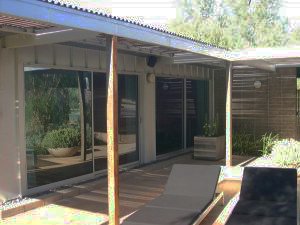
Cost per square foot:
- Materials:
- Basic aluminum lattice: $10-$15
- Solid aluminum panels: $20-$30
- Insulated aluminum panels: $30-$60
- Installation: $5-$10 per square foot, although DIY kits can be cheaper.
Average total cost:
- Size:
- 10′ x 10′ basic lattice: $1,000-$1,500
- 10′ x 10′ solid panel: $2,000-$3,000
- 10′ x 10′ insulated panel: $3,000-$6,000
Factors affecting cost:
- Size and shape: Larger and more complex shapes cost more.
- Roof style: Flat roofs are cheaper than vaulted or curved roofs.
- Pergolas vs. attached covers: Pergolas are typically more expensive.
- Brand and quality: Higher-quality materials and brands cost more.
- Local labor costs: Rates can vary by region.
Additional resources:
- HomeAdvisor: Get free quotes from local contractors.
- CostHelper: Provides a detailed cost breakdown for aluminum patio covers.
- Remodeling Calculator: Offers a simple online calculator to estimate your aluminum patio cover cost.
Remember, these are just estimates, and the actual cost will depend on your specific needs and preferences. It’s always best to get quotes from several contractors before making a decision.
Here are some bonus tips for saving money on your aluminum patio cover:
- Get multiple quotes: Compare prices and services from different contractors.
- Consider DIY installation: If you’re handy, installing a basic kit yourself can save money.
- Choose a simple design: Opt for a flat roof and basic shape to keep costs down.
- Shop around for materials: Compare prices at different home improvement stores.
Pros:
- Affordable: Compared to other materials like wood or composite, aluminum is generally the most budget-friendly option.
- Durable: Aluminum is resistant to rust, corrosion, and insect damage, making it a long-lasting investment.
- Low maintenance: Unlike wood, aluminum requires minimal upkeep. You won’t need to worry about painting, staining, or sealing.
- Lightweight: Aluminum is easy to install, especially compared to heavier materials like wood or concrete. This can save you time and money on installation costs.
- Versatile: Aluminum comes in a variety of colors and styles, allowing you to customize your cover to match your home’s exterior and personal preferences.
- Fire-resistant: Aluminum is non-combustible, making it a safer choice than some other materials.
- Good heat dissipation: Aluminum reflects heat well, keeping your patio cooler in the summer.
Cons:
- Can be noisy: Rain and hail can make a lot of noise on an aluminum roof, which might be disruptive if you use your patio during storms.
- Offers less insulation: Aluminum doesn’t insulate as well as some other materials, so your patio might be colder in the winter and hotter in the summer.
- Can dent easily: While aluminum is strong, it can dent if hit with hail or other heavy objects.
- Less natural aesthetic: Some people prefer the look of wood or other natural materials over aluminum.
- May not add significant resale value: While an aluminum patio cover can be a valuable addition to your home, it may not increase your resale value as much as other improvements.
Overall:
Aluminum patio covers are a great option for homeowners who are looking for an affordable, durable, and low-maintenance solution. However, it’s important to be aware of the potential downsides, such as noise and lack of insulation, before making a decision.
Ultimately, the best material for your patio cover will depend on your individual needs and preferences. Consider your budget, climate, desired level of insulation, and aesthetic preferences when making your decision.
Vinyl Patio Cover Cost

Cost per square foot:
- Materials:
- Basic vinyl lattice: $10-$15
- Solid vinyl panels: $15-$25
- Installation: $5-$10 per square foot, although DIY kits can be cheaper.
Average total cost:
- Size:
- 10′ x 10′ basic lattice: $1,000-$1,500
- 10′ x 10′ solid panel: $1,500-$2,500
Factors affecting cost:
- Size and shape: Larger and more complex shapes cost more.
- Roof style: Flat roofs are cheaper than vaulted or curved roofs.
- Pergolas vs. attached covers: Pergolas are typically more expensive.
- Brand and quality: Higher-quality materials and brands cost more.
- Local labor costs: Rates can vary by region.
Additional resources:
- HomeAdvisor: Get free quotes from local contractors.
- CostHelper: Provides a detailed cost breakdown for vinyl patio covers.
- Remodeling Calculator: Offers a simple online calculator to estimate your vinyl patio cover cost.
Remember, these are just estimates, and the actual cost will depend on your specific needs and preferences. It’s always best to get quotes from several contractors before making a decision.
Here are some bonus tips for saving money on your vinyl patio cover:
- Get multiple quotes: Compare prices and services from different contractors.
- Consider DIY installation: If you’re handy, installing a basic kit yourself can save money.
- Choose a simple design: Opt for a flat roof and basic shape to keep costs down.
- Shop around for materials: Compare prices at different home improvement stores.
Vinyl Patio covers Pro’s And Con’s
Pros:
- Affordable: Similar to aluminum, vinyl is generally a budget-friendly option compared to wood or composite materials.
- Low maintenance: Vinyl requires minimal upkeep, just occasional cleaning with soap and water. No painting or staining needed!
- Lightweight and easy to install: Like aluminum, vinyl’s light weight makes it easier and potentially cheaper to install.
- Weather-resistant: Vinyl is resistant to rot, cracking, and insect damage, making it a durable choice for most climates.
- Variety of colors and styles: You can find vinyl covers in various colors and finishes to match your home’s exterior and personal preferences.
- Good heat insulator: Compared to aluminum, vinyl offers better insulation, keeping your patio cooler in the summer and warmer in the winter.
Cons:
- Can fade in direct sunlight: Over time, prolonged exposure to strong sunlight can cause vinyl to fade or become brittle.
- Susceptible to high temperatures: In extreme heat, vinyl panels can expand and contract, potentially leading to sagging or warping.
- Less fire-resistant than aluminum: While not flammable, vinyl may melt or give off fumes in a fire compared to aluminum’s non-combustible nature.
- Less natural aesthetic: Similar to aluminum, vinyl might not have the same aesthetic appeal as wood or other natural materials for some people.
- Limited recyclability: While advancements exist, vinyl isn’t always readily recyclable compared to other materials.
Overall:
Vinyl patio covers offer a good balance of affordability, durability, and low maintenance. They’re ideal for budget-conscious homeowners who prioritize practicality and ease of upkeep. However, keep in mind the potential downsides like fading, heat sensitivity, and less fire resistance when making your decision.
Ultimately, the best material for your patio cover depends on your individual needs and priorities. Consider factors like budget, climate, desired level of insulation, and aesthetic preferences before choosing between vinyl, aluminum, or other options.
Wood Patio Cover Cost
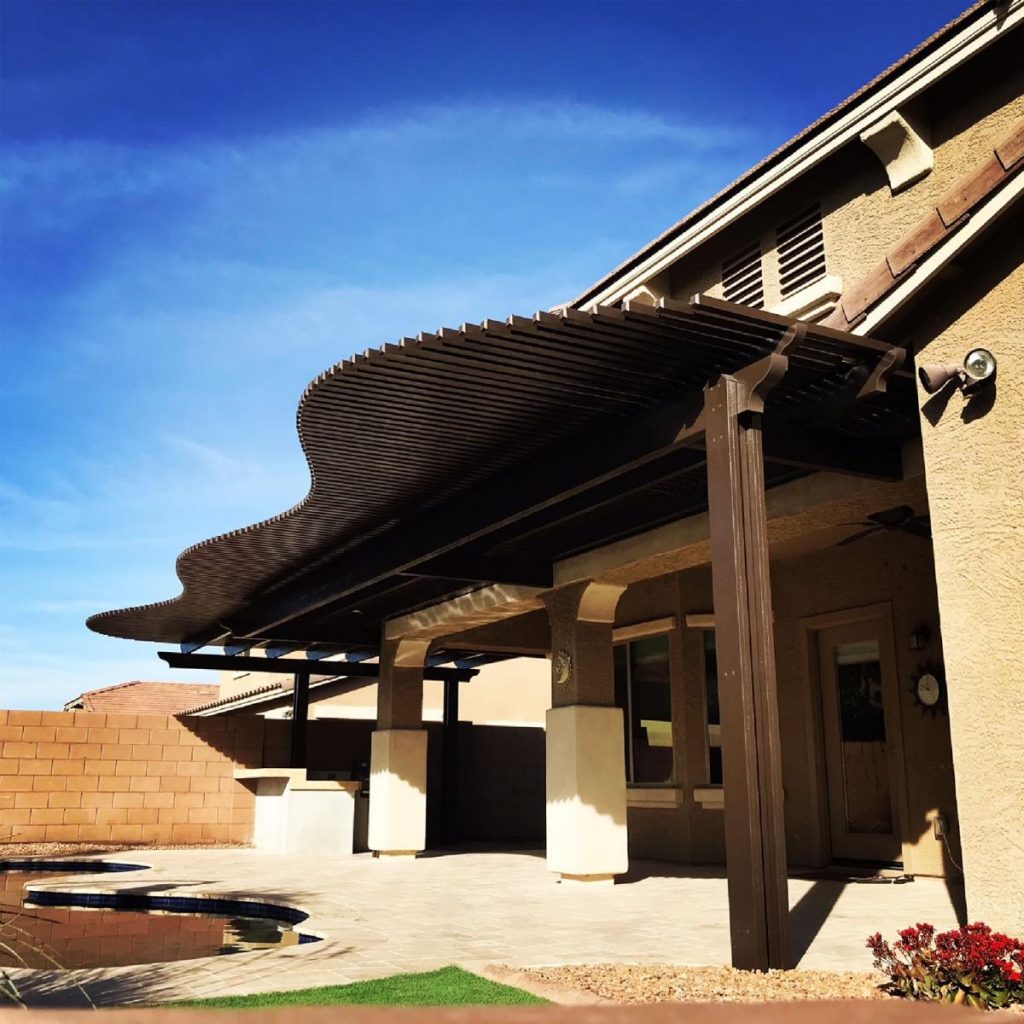
Wood patio covers offer a unique blend of beauty, durability, and customization, but they come at a steeper price point compared to aluminum or vinyl. Here’s a breakdown of their costs:
Cost per square foot:
- Material:
- Basic lattice: $20-$35
- Solid roof with shingles: $40-$80
- Custom designs with high-end wood: $80-$120+
- Installation: $10-$20 per square foot, although professional installation is highly recommended for complex designs.
Average total cost:
- Size:
- 10′ x 10′ basic lattice: $2,000-$3,500
- 10′ x 10′ solid roof: $4,000-$8,000
- Custom designs can easily reach $10,000 or more
Factors affecting cost:
- Wood type: Cedar, redwood, and pressure-treated lumber are common choices, with cedar and redwood being more expensive.
- Roof style: Flat roofs are cheaper than vaulted or curved roofs.
- Pergolas vs. attached covers: Pergolas are typically more expensive.
- Custom designs: Intricate features and unique shapes cost more.
- Paint or stain: Applying a protective finish adds to the cost.
- Local labor costs: Rates can vary by region.
Pro’s and Con’s of Wood Patio Covers
Pros:
- Beautiful and natural aesthetic: Wood adds warmth, character, and a timeless elegance to any outdoor space, blending seamlessly with nature.
- Durable and long-lasting: When properly maintained, wood patio covers can last for decades, especially with pressure-treated lumber or naturally resistant options like cedar or redwood.
- Customizable: Wood offers endless design possibilities, allowing you to create a truly unique and personalized cover to match your style and preferences.
- Good insulator: Wood provides better insulation than aluminum or vinyl, keeping your patio cooler in the summer and warmer in the winter.
- Can increase resale value: A well-designed and maintained wood patio cover can add significant value to your home.
Cons:
- Higher cost: Wood is generally the most expensive material for patio covers, with prices significantly higher than aluminum or vinyl.
- High maintenance: Wood requires regular upkeep, including painting, staining, and sealing every few years, to maintain its appearance and prevent rot.
- Susceptible to weather damage: Wood can be vulnerable to rot, warping, and insect damage if not properly treated and maintained.
- Fire hazard: Wood is flammable, so be sure to follow local fire codes and consider fire-retardant treatments.
- Installation complexity: Complex wood designs require skilled professionals for installation, adding to the cost.
Overall:
Wood patio covers offer a premium choice for homeowners who prioritize beauty, durability, and customization. However, be prepared for the higher initial cost and ongoing maintenance commitment compared to other materials.
Ultimately, the best material for your patio cover depends on your individual needs and priorities. Consider factors like budget, desired level of maintenance, aesthetic preferences, and climate before making your decision.
Lattice Patio Cover Cost

Lattice patio covers offer a budget-friendly and versatile option for providing shade and partial privacy to your outdoor space. Here’s a breakdown of their costs:
Cost per square foot:
- Material:
- Basic vinyl lattice: $5-$10
- Aluminum lattice: $7-$15
- Wood lattice: $10-$20
- Installation: $5-$10 per square foot, although DIY installation is feasible for basic designs.
Average total cost:
- Size:
- 10′ x 10′ basic vinyl lattice: $500-$1,000
- 10′ x 10′ aluminum lattice: $700-$1,500
- 10′ x 10′ wood lattice: $1,000-$2,000
Factors affecting cost:
- Material: Wood is the most expensive, followed by aluminum and then vinyl.
- Size and shape: Larger and more complex shapes cost more.
- Attached vs. freestanding covers: Freestanding covers typically cost more.
- DIY vs. professional installation: Professional installation adds to the cost but ensures proper construction.
- Local labor costs: Rates can vary by region.
Lattice Patio covers Pro’s And Con’s
Pros:
- Affordable: Lattice covers are generally the most budget-friendly option compared to solid roofs or pergolas, making them ideal for cost-conscious homeowners.
- Partial shade and light: The open lattice design allows sunlight to filter through, providing dappled shade and maintaining a brighter feel under the cover.
- Ventilation: Air circulates freely through the lattice, preventing excessive heat buildup and creating a more comfortable outdoor space.
- Privacy: While not completely enclosed, lattice offers some visual screening from above, enhancing privacy on your patio.
- Lightweight and easy to install: Lattice covers are typically lighter than solid roofs, making them easier to install and potentially suitable for DIY projects.
- Low maintenance: Unlike solid roofs, lattice requires minimal maintenance and doesn’t need cleaning as often.
- Variety of materials and styles: You can find lattice covers in various materials like vinyl, aluminum, and wood, and choose from different designs to match your taste and existing décor.
Cons:
- Limited protection from elements: Lattice offers partial shade and minimal protection from rain, snow, and strong winds. This might not be ideal for areas with harsh weather conditions.
- Less privacy compared to solid roofs: If you desire complete privacy or protection from the sun, lattice may not be sufficient.
- Not ideal for all weather conditions: Heavy rain or snow can accumulate on the lattice, potentially causing sagging or structural issues.
- Less insulation: Lattice provides minimal insulation, so your patio might be colder in the winter and hotter in the summer compared to a solid roof.
- Durability: Depending on the material, lattice can be susceptible to damage from wind, hail, or falling objects. Wood lattice, for example, requires regular maintenance to prevent rot and warping.
- Aesthetics: Some people might find the open lattice design less aesthetically pleasing compared to a solid roof or pergola.
Overall:
Lattice patio covers offer a practical and affordable solution for adding shade, partial privacy, and ventilation to your outdoor space. They’re perfect for budget-conscious homeowners who prioritize light and air circulation over complete protection from the elements. However, consider the limitations regarding weather protection, privacy, and insulation before making your decision.
Ultimately, the best choice for your patio cover depends on your individual needs, preferences, and budget. Weigh the pros and cons of lattice against other options like solid roofs or pergolas to find the perfect solution for enhancing your outdoor enjoyment.
Alumawood Patio Cover Cost
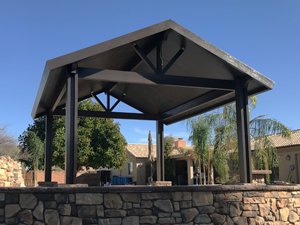
Alumawood patio covers offer a unique blend of affordability, durability, and low maintenance compared to other wood or metal options. Here’s a breakdown of their costs:
Cost per square foot:
- Materials:
- Basic lattice: $15-$20
- Solid panels: $25-$40
- Insulated panels: $40-$60
- Installation: $5-$10 per square foot, although DIY kits can be cheaper.
Average total cost:
- Size:
- 10′ x 10′ basic lattice: $1,500-$2,000
- 10′ x 10′ solid panels: $2,500-$4,000
- 10′ x 10′ insulated panels: $4,000-$6,000
Factors affecting cost:
- Size and shape: Larger and more complex shapes cost more.
- Roof style: Flat roofs are cheaper than vaulted or curved roofs.
- Pergolas vs. attached covers: Pergolas are typically more expensive.
- Brand and quality: Higher-quality materials and brands cost more.
Alumawood Patio Cover Pros and Cons:
Pros:
- Affordability: Compared to traditional wood covers, Alumawood offers a more budget-friendly option while still maintaining a premium look.
- Durability: Alumawood is resistant to rot, warping, cracking, and insect damage, making it a long-lasting investment.
- Low maintenance: Unlike wood, Alumawood requires minimal upkeep, just occasional cleaning with soap and water. No painting or staining needed!
- Lightweight: Similar to aluminum, Alumawood’s lighter weight makes it easier and potentially cheaper to install.
- Variety of styles and colors: You can find Alumawood covers in various styles like pergolas, attached roofs, and lattice designs, with a range of colors to match your home’s exterior.
- Good insulator: While not as insulating as solid roofs, Alumawood offers better insulation than aluminum, improving your patio’s comfort in both hot and cold weather.
- Fire-resistant: Alumawood is non-combustible, providing an added layer of safety compared to wood.
Cons:
- Higher cost than aluminum or vinyl: Alumawood is slightly more expensive than basic aluminum or vinyl covers.
- Susceptible to dents: While strong, Alumawood can dent if hit with hail or heavy objects.
- Less natural aesthetic than wood: Some people might prefer the natural look of wood over the painted Alumawood finish.
- Limited DIY options: Due to its unique composition, DIY installation for complex Alumawood designs might be less feasible compared to simpler materials.
- Warranty limitations: Compared to some wood brands, Alumawood’s warranty on labor might be shorter.
Overall:
Alumawood patio covers offer a compelling blend of affordability, durability, low maintenance, and style. They’re a great choice for homeowners who prioritize value, practicality, and a modern aesthetic for their outdoor space. However, consider the potential downsides like dent susceptibility and limited DIY options when making your decision.
Ultimately, the best material for your patio cover depends on your individual needs and preferences. Weigh the pros and cons of Alumawood against other options like wood, aluminum, or vinyl to find the perfect fit for your budget and desired aesthetic.
Pergolas Cost
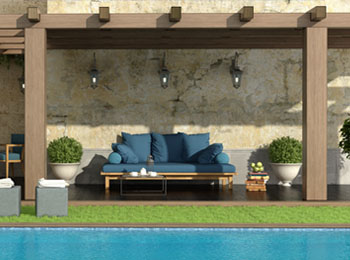
Pergolas offer a beautiful and functional addition to any outdoor space, providing shade, structure, and a touch of elegance. However, their costs can vary widely depending on several factors. Here’s a breakdown of pergola costs:
Cost per square foot:
- Materials:
- Pre-fab kits (wood, vinyl, aluminum): $10-$40
- Custom-built wood pergolas: $30-$65
- Installation: $5-$120 per hour, with professional installation typically recommended for complex designs.
Average total cost:
- Size:
- 10′ x 10′ pre-fab kit: $1,000-$4,000
- 12′ x 16′ custom wood pergola: $5,000-$12,000
Pros:
- Beautiful and elegant: Pergolas add a touch of architectural interest and sophistication to any outdoor space.
- Provides shade and partial protection: The open lattice design offers dappled shade while allowing light and air to circulate freely.
- Versatility: Pergolas can be customized with various materials, sizes, shapes, and features like climbing plants, shade sails, or lighting.
- Increases usable outdoor space: Creates an inviting extension of your living area, perfect for dining, relaxing, or entertaining.
- Relatively affordable: Compared to solid patio covers, pergolas offer a more budget-friendly option.
- Low maintenance: Requires minimal upkeep beyond occasional cleaning and potential staining or painting depending on the material.
- Can add value to your home: A well-designed pergola can enhance your property’s curb appeal and potentially increase its resale value.
Cons:
- Limited weather protection: Pergolas offer no protection from rain, snow, or strong winds, making them unsuitable for year-round use in some climates.
- Less privacy: The open lattice design provides minimal privacy compared to solid roofs or enclosed structures.
- May require permits: Depending on your location and pergola size, building permits might be necessary.
- Potential structural concerns: Complex designs or improper construction can lead to stability issues, especially in windy areas.
- Maintenance needs can vary: Wood pergolas require regular staining or painting, while vinyl or aluminum require less upkeep but might be less aesthetically pleasing to some.
- Not ideal for all architectural styles: Pergolas might not seamlessly integrate with every home’s style, so careful consideration is necessary.
Overall:
Pergolas offer a beautiful and versatile way to enhance your outdoor space with shade, structure, and a touch of elegance. However, their lack of weather protection and limited privacy should be considered. Weigh the pros and cons carefully and choose a size, design, and material that complements your home’s style and fits your budget and desired level of functionality.
Lean-To Patio Cover Cost
Lean-to patio covers offer a practical and budget-friendly solution for adding valuable covered space to your outdoor area. Here’s a breakdown of their costs:
Cost per square foot:
- Materials:
- Aluminum: $5-$15
- Vinyl: $10-$20
- Wood: $15-$30
- Installation: $5-$10 per square foot, although DIY installation is possible for basic designs.
Average total cost:
- Size:
- 10′ x 10′ aluminum: $1,000-$2,500
- 12′ x 16′ vinyl: $2,400-$4,800
- 10′ x 15′ wood: $2,250-$4,500
Lean-to Patio Cover Pros and Cons:
Pros:
- Affordability: Compared to other patio cover options like pergolas or solid roofs, lean-to covers are generally the most budget-friendly, making them ideal for cost-conscious homeowners.
- Increased usable space: They extend your living area outdoors, providing valuable covered space for dining, relaxing, or entertaining, regardless of weather conditions.
- Protection from elements: Lean-to covers offer shelter from rain, sun, and snow, allowing you to enjoy your patio year-round in most climates.
- Simple and fast installation: Compared to more complex designs, lean-to covers are typically easier and faster to install, potentially saving time and money.
- Low maintenance: Most materials, like aluminum or vinyl, require minimal upkeep like occasional cleaning, making them hassle-free.
- Variety of styles and materials: You can find lean-to covers in various materials like aluminum, vinyl, or wood, and choose from different styles and finishes to match your home’s exterior.
- Can add value to your home: A well-designed and attached lean-to cover can potentially increase your home’s resale value.
Cons:
- Limited ventilation: The attached nature can lead to reduced air circulation compared to free-standing structures or pergolas.
- Less light penetration: Depending on the roof material and pitch, lean-to covers might block natural light from entering your home through windows or doors.
- Less privacy: Open designs offer minimal privacy compared to solid roofs or enclosed structures.
- Drainage considerations: Proper drainage needs to be planned and implemented to avoid water accumulation on the roof or near the foundation.
- May not suit all architectural styles: The attached nature might not aesthetically blend with every home’s style, so careful consideration is necessary.
- Limited design flexibility: Compared to detached pergolas, lean-to covers offer less flexibility in terms of size, shape, and customization options.
Overall:
Lean-to patio covers offer a practical and affordable solution for expanding your outdoor living space and enjoying it year-round. They’re ideal for budget-conscious homeowners who prioritize functionality and protection from the elements over complete openness and light penetration. However, consider the potential downsides like limited ventilation, privacy, and design flexibility before making your decision.
Cloth Patio Cover Cost – Awning Cost
Cloth patio covers, also known as awnings, offer a versatile and stylish way to add shade and protection to your outdoor space. Their costs can vary depending on several factors, but here’s a breakdown to help you budget:
Cost per square foot:
- Manual: $5 – $15
- Motorized: $10 – $25
Average total cost:
- Size:
- 8′ x 10′ manual: $400 – $1,500
- 10′ x 12′ motorized: $1,200 – $3,000
Pros and Cons of Cloth Patio Covers (Awnings):
Pros:
- Affordability: Compared to solid roofs or pergolas, awnings are generally a budget-friendly option for adding shade and protection to your patio.
- Versatility: You can retract or extend awnings as needed, providing shade when desired and allowing sunlight in when you want.
- Weather protection: Awnings offer protection from sun, rain, and light hail, extending your outdoor living season.
- Improved energy efficiency: By blocking sunlight, awnings can help keep your patio and home cooler, potentially reducing energy costs.
- Variety of styles and colors: You can find awnings in various styles, sizes, and colors to complement your home’s exterior and personal preferences.
- Low maintenance: Most awning fabrics are treated for water and stain resistance, requiring minimal upkeep beyond occasional cleaning.
- Can add value to your home: Well-maintained awnings can enhance your home’s curb appeal and potentially increase its resale value.
Cons:
- Limited durability: Fabric awnings are less durable than metal or solid roofs and may need to be replaced every 5-10 years depending on weather conditions and usage.
- Susceptible to wind damage: Strong winds can damage retractable awnings, requiring caution in windy regions.
- Less privacy: Fabric awnings offer minimal privacy compared to solid roofs or enclosed structures.
- Maintenance considerations: While low maintenance, retracting and extending mechanisms might require occasional lubrication or minor repairs.
- Not ideal for all weather conditions: Heavy snow or ice accumulation can damage awnings, requiring careful monitoring and potential removal in winter.
- Installation complexity: Professional installation is recommended, especially for motorized awnings, adding to the initial cost.
Overall:
Cloth patio covers offer a budget-friendly and customizable option for shade and protection on your patio. While motorized awnings offer convenience, manual options can be a cost-effective alternative. Carefully consider your needs, budget, and desired features before making your decision.
I hope this information helps you budget for your ideal cloth patio cover!
JLC Offers Patio Cover Installation In Phoenix, Arizona
If your thinking about installing a patio cover in Arizona, let JLC assist! JLC offers installation of wood, alumawood, aluminum and lattice patio covers and pergolas for homeowners in Phoenix, Gilbert, Glendale, Mesa and other areas in Arizona.
